Flower beds are often celebrated for their bursts of color, fragrance, and seasonal charm. Herbs, on the other hand, bring practicality, scent, and culinary value to any garden. When combined thoughtfully, herbs and flowers create mixed beds that are not only stunning but also useful, offering beauty for the eyes and flavor for the kitchen. Beyond aesthetics and taste, these mixed plantings can boost biodiversity, repel pests naturally, and provide long-term sustainability for gardeners.
This article explores the concept of mixed herb-and-flower beds, their benefits, design strategies, plant pairings, and practical care tips for thriving, multipurpose gardens.
Why Combine Herbs and Flowers in Beds?
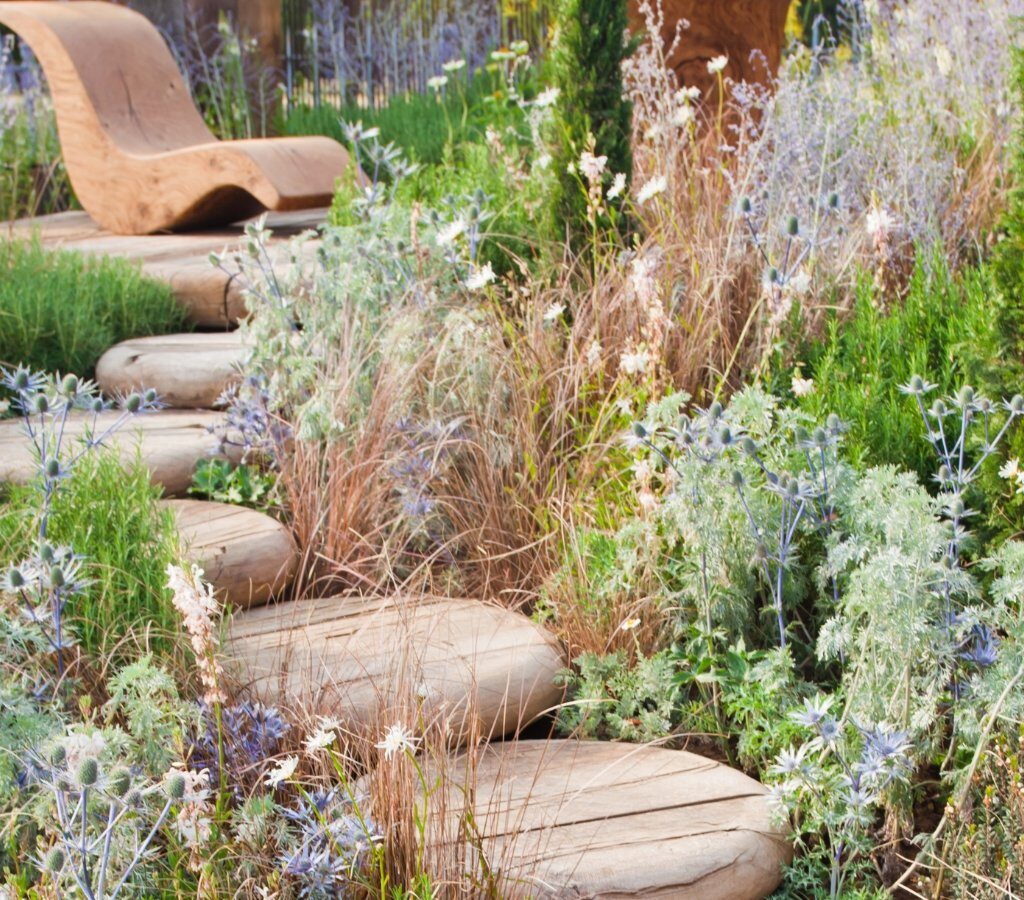
Blending herbs with flowers is more than a decorative idea—it’s a time-tested practice rooted in cottage gardening and permaculture principles. Some of the most compelling reasons to create mixed herb-and-flower beds include:
1. Aesthetic Appeal
Herbs like rosemary, basil, or lavender contribute lush foliage and aromatic textures, which contrast beautifully with bright floral blooms such as zinnias, marigolds, or roses. The result is a rich tapestry of colors, textures, and scents.
2. Culinary Value
Fresh herbs such as mint, thyme, oregano, or chives are always within reach for cooking, making your flower beds double as a kitchen garden.
3. Natural Pest Control
Many herbs deter common garden pests. For instance, basil can repel mosquitoes and aphids, while rosemary helps keep cabbage moths away. Intermixing these with flowers reduces the need for chemical sprays.
4. Pollinator Attraction
Both herbs and flowers provide nectar and pollen. Bees love thyme, oregano, and borage, while butterflies flock to coneflowers and cosmos. Together, they create a buzzing, lively habitat.
5. Efficient Use of Space
Mixed beds make the most of limited garden areas, allowing gardeners to maximize visual impact and functionality in smaller plots or urban gardens.
Designing Mixed Herb-and-Flower Beds
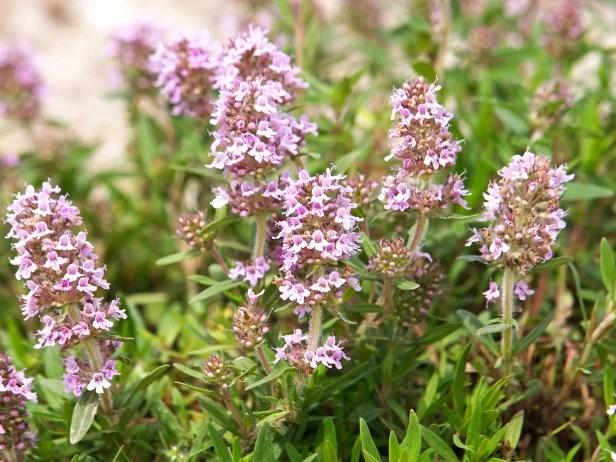
The key to success lies in planning layouts that balance beauty and practicality. Consider the following design strategies:
1. Layering for Depth
- Place tall herbs like dill or fennel at the back of a bed, where their feathery textures won’t shade smaller plants.
- Medium-height plants such as lavender, sage, and echinacea work well in the middle.
- Low-growing herbs like thyme, oregano, and creeping rosemary make excellent borders or ground covers.
2. Color Harmony
Choose color themes that blend herbs’ green and silvery foliage with flower shades. For instance:
- Warm palette: Pair marigolds and zinnias with basil and thyme.
- Cool palette: Combine lavender and salvia with purple coneflowers.
- Rustic palette: Match sunflowers with rosemary and oregano for a country-style look.
3. Seasonal Interest
Select a mix of annuals, perennials, and biennials so the bed looks lively throughout the year. Early spring bulbs, summer blooms, and evergreen herbs can keep the bed attractive across seasons.
4. Functional Zones
Design parts of the bed specifically for culinary herbs, while others emphasize pollinator-friendly flowers. This ensures beauty and function without overcrowding.
Best Herb-and-Flower Combinations
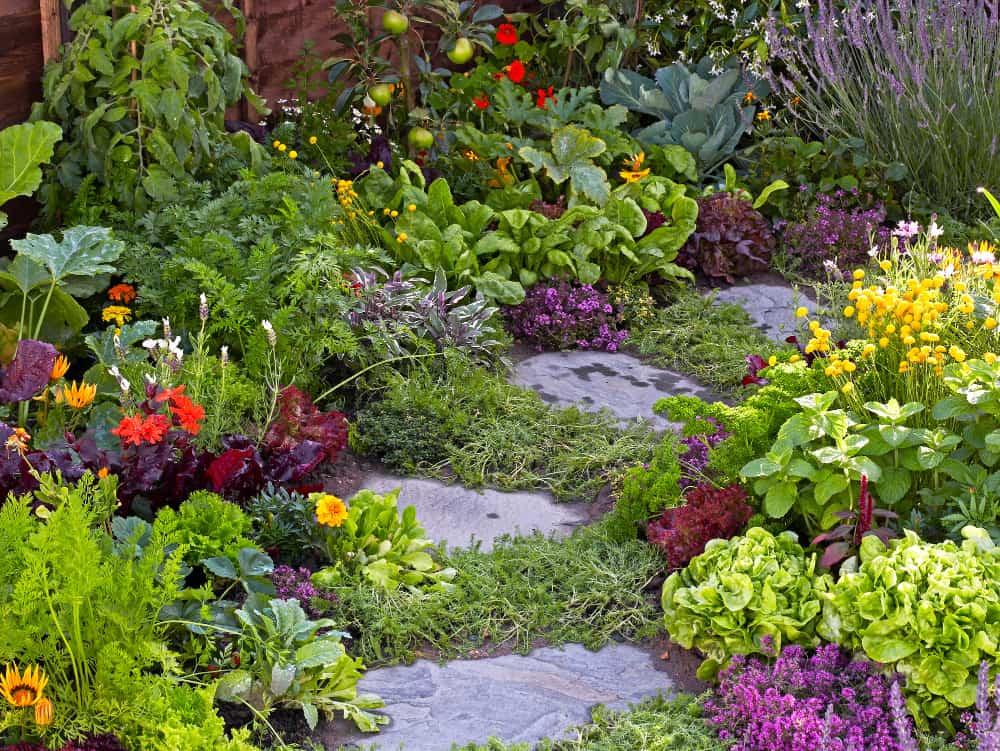
Some plants simply thrive together due to complementary needs and mutual benefits. Here are some tried-and-true combinations for mixed beds:
1. Lavender and Roses
Lavender’s silvery foliage and purple spikes beautifully contrast with rose blooms while deterring pests like aphids. Both enjoy sunny conditions.
2. Basil and Marigolds
Basil adds fragrance and flavor while marigolds deter nematodes in the soil. Together, they’re a colorful and practical duo.
3. Thyme and Creeping Phlox
Low-growing thyme blends seamlessly with the carpet of phlox, creating a stunning ground layer that’s both edible and ornamental.
4. Echinacea and Oregano
Coneflowers provide height and color, while oregano spreads as a lush ground cover. Both attract bees and butterflies.
5. Chamomile and Zinnias
Chamomile’s delicate daisy-like flowers and feathery foliage contrast with the bold, vibrant zinnias. Bonus: chamomile enriches the soil.
6. Mint and Bee Balm (Monarda)
Both plants are pollinator magnets. Bee balm’s dramatic blooms attract hummingbirds, while mint’s fragrance keeps pests at bay (but plant mint in containers to prevent spreading).
Tips for Thriving Mixed Beds
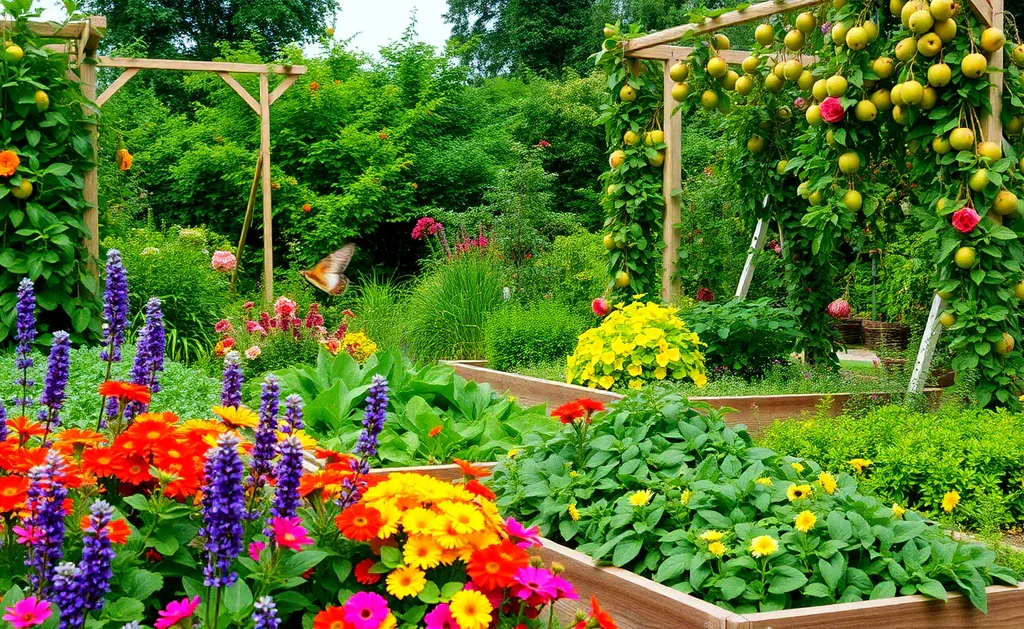
Creating a successful herb-and-flower bed requires balancing different plant needs. Here are some essential care tips:
1. Soil Preparation
Most herbs and flowers thrive in well-drained, fertile soil. Enrich with compost before planting. Mediterranean herbs like lavender and rosemary prefer sandy soils, while moisture-loving flowers may need richer soil—group plants with similar needs together.
2. Sunlight Considerations
Herbs such as basil, thyme, and rosemary prefer 6–8 hours of direct sun, while shade-tolerant flowers like impatiens can fill in cooler corners. Design accordingly.
3. Watering Needs
- Mediterranean herbs thrive on less water.
- Flowering annuals often require consistent moisture.
Use drip irrigation or soaker hoses to balance water distribution.
4. Maintenance and Pruning
Regular pruning of herbs like basil or mint encourages fresh growth and prevents legginess. Deadheading flowers like zinnias extends bloom times and keeps beds vibrant.
5. Harvesting Strategy
Harvest herbs regularly to keep them productive. Snip flowers for bouquets to enjoy indoors while encouraging new blooms outdoors.
Creative Ideas for Herb-and-Flower Beds
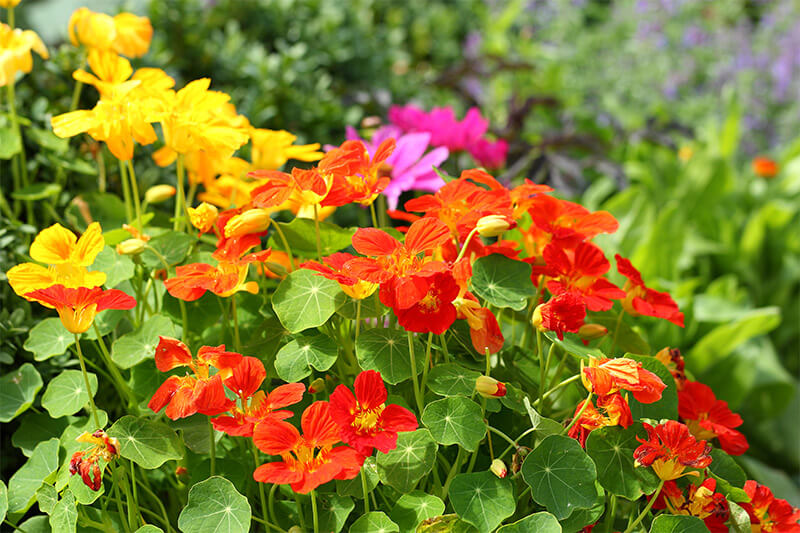
For gardeners looking to add flair, here are some fun design approaches:
- Cottage Garden Style: Mix herbs like chives, sage, and parsley with colorful flowers like hollyhocks and cosmos for a charming, informal look.
- Fragrance-Focused Beds: Combine lavender, rosemary, and jasmine with fragrant roses for a sensory delight.
- Butterfly Gardens: Plant dill, fennel, and parsley (host plants for swallowtail caterpillars) alongside nectar-rich flowers like lantana and verbena.
- Edible Borders: Use thyme, oregano, or creeping rosemary along edges, then fill the center with bold blooms such as dahlias or tulips.
Benefits Beyond Beauty and Flavor
Mixed herb-and-flower beds provide more than immediate appeal:
- Wildlife Habitat: Pollinators, birds, and beneficial insects thrive in diverse plantings.
- Reduced Chemicals: Companion planting minimizes reliance on synthetic pesticides and fertilizers.
- Health and Well-being: Working with herbs and flowers reduces stress, while fresh harvests add flavor and nutrition to meals.
- Cultural Connection: Mixed beds echo traditional gardening practices, reconnecting us with sustainable, heritage methods of growing food and beauty together.
Conclusion
Mixed herb-and-flower beds represent the perfect marriage of beauty and utility. They enrich gardens with vibrant colors, fragrant foliage, buzzing pollinators, and fresh flavors for the kitchen. By carefully choosing plant pairings, designing harmonious layouts, and balancing care needs, gardeners can create spaces that delight the senses while serving practical purposes.
Whether you’re cultivating a rustic cottage border, a fragrant corner, or a colorful pollinator haven, blending herbs and flowers ensures your garden will always be more than just decorative—it becomes a living, thriving, and flavorful work of art.




Leave A Comment